 |

Day Three: Capturing stones, surrounding territory |
 |
[3]How to link up

· When you are escaping, you can link up your stones solidly or loosely. In actual games, loose connections are more common. This is effective not only when you are fleeing but also when you want to build a position. Let's look at a few patterns.
(a) The one-space jump.
· Dia. 55b. The move of Black 1 is called a 'jump'. Since there is only one space between the two black stones, this shape is called a one-space jump. These stones are pretty well linked up. |
 |
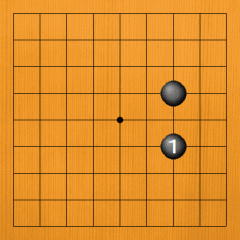
Dia. 55b |
|
Dia. 56. Even if White approaches with 1, Black plays at 2 and the black stones are linked up. |
 |
Dia. 56
|
|
· The only thing is that it's perplexing when White plays in the middle of the black stones with 1 in Dia. 57. In this case, Black plays at 2, and the white stone is surrounded on three sides. If Black plays at X next, the white stone will be captured, so --> |
 |
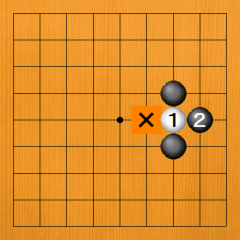
Dia. 57 |
|
Dia. 58. White has no choice but to flee with 1. If Black then connects at 2, all his stones are linked up. |
 |
Dia. 58
|
|
Even if White cuts at 1 in Dia. 59 later, Black plays on top with 2 and captures this stone. If White tries to escape with 3, Black plays 4, and White has nowhere to run to. |
 |
Dia. 59
|
|
Therefore, a chain of one-space jumps, as in Dia. 60, is pretty well linked up. |
 |
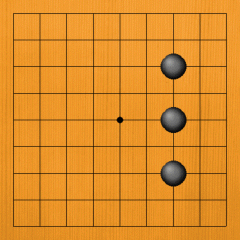
Dia. 60 |
|
In Dia. 61, both Black and White have one-space jumps; both sides are linked up. |
 |
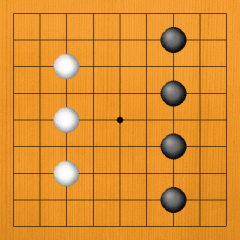
Dia. 61 |
(b) The two-space jump
· Black 1 in Dia. 62 is connection that's a little wider. There are two spaces between the stones, so this shape is called a two-space jump. It's also pretty well linked up. |
 |
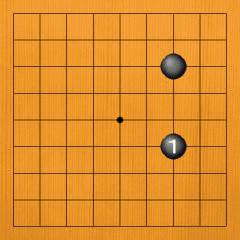
Dia. 62 |
|
Dia. 63. If White comes near with 1, Black links up with 2. Black 2 and the marked stone make the one-space jump shape, so Black has no worries. |
 |
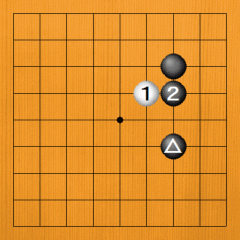
Dia. 63 |
|
· Dia. 64. Even if White attaches against the black stone, Black plays underneath with 2 and maintains his connection. If White 3, Black plays 4 and is safe. |
 |
Dia. 64
|
(c) The three-space jump
· The basic shapes for connection are the one-space jump and the two-space jump. In Dia. 65, there are three spaces between 1 and the other black stone, so this is called a three-space jump. This is a move that expands one's position, but it is not a connected shape. |
 |
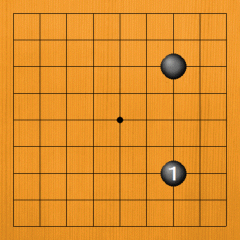
Dia. 65 |
|
Dia. 66. If White comes in-between the black stones with 1, they are separated. |
 |
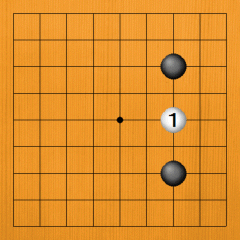
Dia. 66 |
· These two stones may not be linked up, but that doesn't mean that they are bad. The interesting thing about Go is that there are various ways of thinking. Even if the stones are not directly linked up, after both sides make one-space jumps in Dia. 67, Black has constructed separate positions above and below. Even if you can't link up, there are other ways to play. You don't have to worry about the finer points of this now.
When you want to link up, the one-space and two-space jumps are convenient; when you don't particularly need to link up, the wider three-space jump is also good. Just for reference, one might even play wider moves sometimes. |
 |
Dia. 67
|
|
 |
 |

 |
|
 |